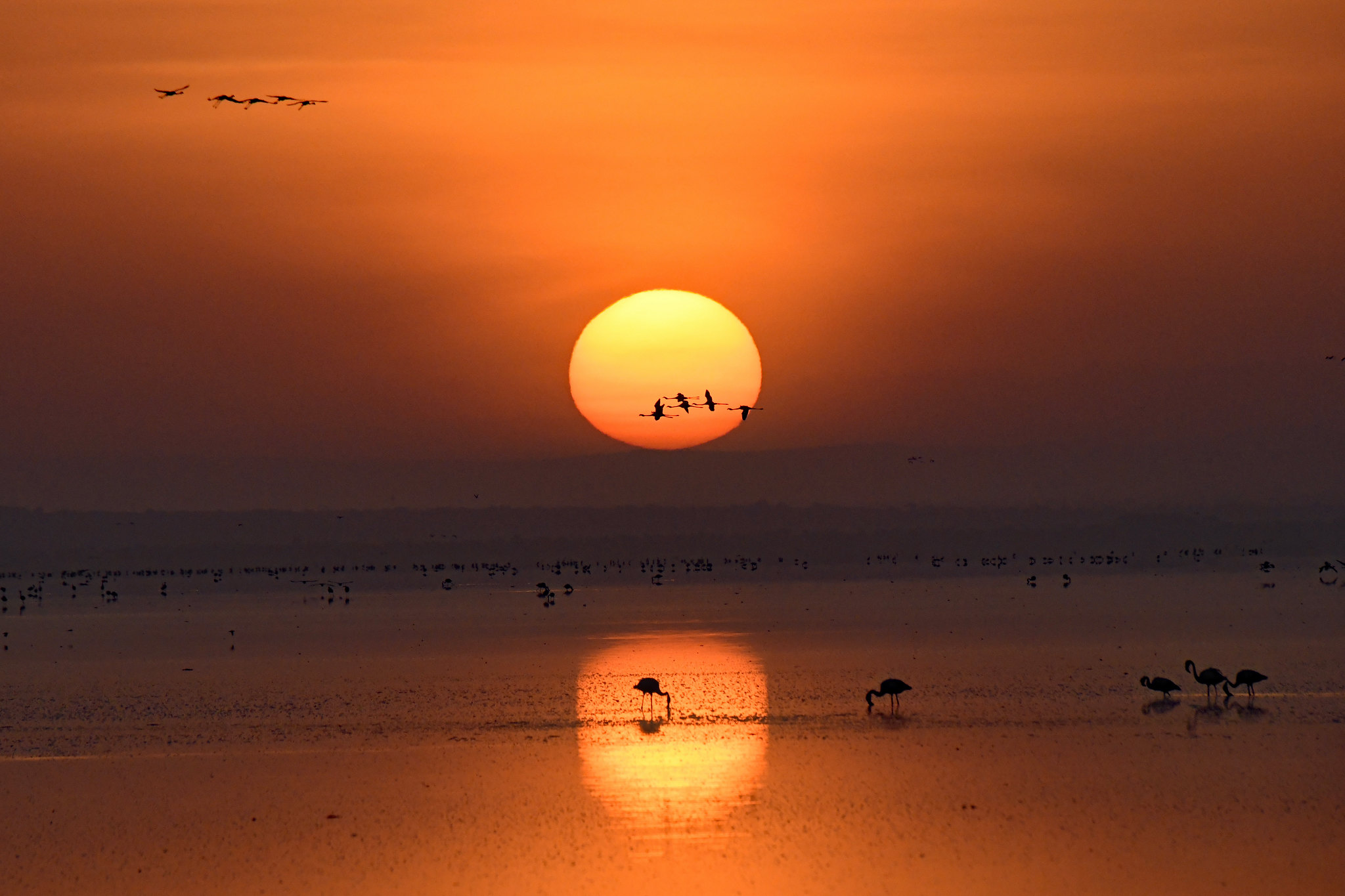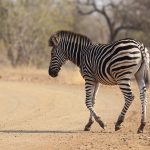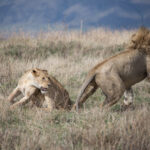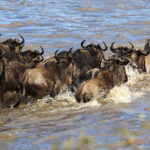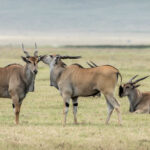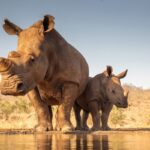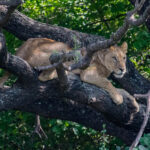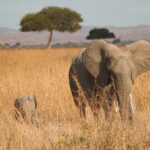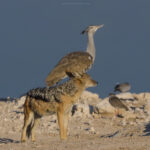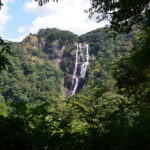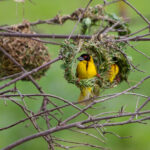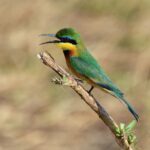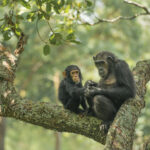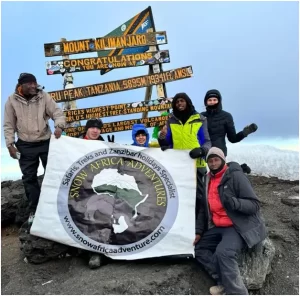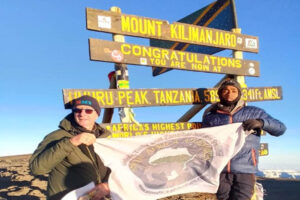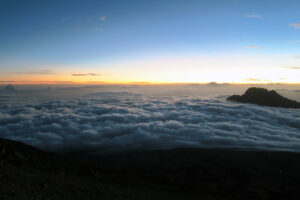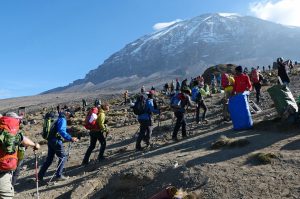The Great Wildebeest migration is considered to be the greatest wildlife event on the earth. If you are curious about this wild event, then here we’re coming up with 15 interesting facts about this Great wildebeest migration.
The great wildebeest migration that occurs every year in Tanzania is a magical ceremony that attracts the attention of the whole world, mostly nature and wildlife enthusiasts. The great wildebeest migration is a truly unique opportunity to see the power of nature at work. It also provides a unique opportunity of witnessing some magnificent animal actions during this great migration time. To witness this wonder show thousands of travelers choose to go for a Tanzania Safari at the migration time. For some travelers, Tanzania Migration Safari is what the country is all about. Well, if you are equally enthusiastic about it, here are a few interesting facts you should know about.
Wildebeest Migration Facts:-
So, here you go- 15 Interesting Facts about the Great Wildebeest migration:
1. It Is The Largest Overland Migration In The World

This spectacular wild-show in which millions of wildebeest and thousands of zebras and gazelles participate occurs every year in the East Africa region. It’s is astonishing to witness such large herds moving in the same direction at a time. More than 1. 5 million wildebeest, 300,000 zebras, as well as impala, eland and Thompson’s gazelles, join the mass run in search of food and water. This striking overland migration occurs in the East African region makes the whole world stunned.
2. Wildebeest Don’t Have Any Natural Leader

Now, that is one of the interesting facts about wildebeest migration. These stunning wildebeest migration while capturing the sense of many travelers it’s quite surprising that these migrating herds have no natural leaders to lead these groups. These wildebeests move with large herds from Serengeti the journey starts and through the Ngorongoro Conservation area the herds move towards Mara River in Kenya. As there are no leaders of these migrating herds, sometimes these large groups got divided into small herds that cover the same track what the mega herds follow.
3. It’s Not Only The Wildebeest

If you are thinking about Tanzania Migration Safari and wondering what else you are going to spot apart from the millions of migrating wildebeests, then be sure it’s going to be an extraordinary journey. This migrating herd doesn’t only have the moving herds of wildebeests, but also there are around 300,000 zebras along with 470,000 antelopes including as impala, eland and Thompson’s gazelles.
4. This Is Also A Grand Feast For The Predators

During the migration, another attraction is the predators in action as they follow the large herds of zebras, wildebeests, and antelopes to hunt. A large number of animals died because of fatigue ness, short of foods or disease. but a large number of animals get fed by the predators, who desperately waiting for them.During this yearly migration, 250,000 wildebeest and 30,000 zebra are likely to be killed by the predators.
5. You Can See The Amazing Cycle Of Life

If you are going on a Tanzania Safari during these great migration days you are going to witness a great cycle of life. Motivated by the chemistry of the earth, the large herds of Wildebeests, Zebras, antelopes starts running in search of grazing fields, this run is not just a journey of food search but a journey of life. Following their taste while this great movement happens they are followed by their eaters like lions, leopards, and while crossing the river the crocodiles wait with wide-open mouth to hunt. This large life circle show how these gazelles are dependent upon the grass-land, and the predators’ dependent upon them to move their food-systems.
6. It Is Actually Not A Single Group

These 2 million animals don’t run in a single group, however, most of them move in large herds. As there are no natural leaders of these herds, they move towards in the same direction. They split up into different herds but moves in the same direction. which creates an illusion of a mega herd. So, if you are having a picture of witnessing millions of migrating herds at once, then that’s not completely true.
7. The Crocodiles In River Mara Get Food After A Long Waiting

Until mid-July, the herds continue trekking across the duvet plains of the Serengeti, and after 3 months of long run, tiredness, and hunger ultimately they reach the Mara river bank. Gathering all their courage they jump into the river to cross it, while the danger was waiting for them with open mouth. The crocodiles are another part of this food-chain of migration, after waiting long months while these migrating herds cross the river the crocodiles got their feast. Sometimes it feels like the animals are committing mass-suicide however, where they try to overcome the obstacles as a single unit.
8. They Cover 800 Km During The Migration

A total of 800kms of the way is covered by the migrating herds who start their journey from the plains of Serengeti. It continues till they reach the open fields of Kenya and on the way, they cover the Mara and Grumeti River. This round trip over two countries let the travelers witness a stunning view of large herds, battling disease, starvation, thirst, and fatigue. These migrating herds cover up almost 40 km in a day.
9. The Group Consumes Around 5000 Tonnes Of Grass
These migrating herds that have the largest group on the earth that move together and run towards the same direction in search of grazing fields and rolling lush grass-lands. In this journey of 8,00km, these millions of animals graze almost 5000tons of grass rain-plump grasses in the deep south of the Serengeti, and in the plains of Kenya.
10. The Calving Season

February is the most preferred season for many travelers to plan for a Tanzania Safari, as this is the calving season of the wild herds. During February, the wildebeest herds mostly spend their time in the short grass plains of the south-eastern part. This is the time when newborns are welcomed. They almost gave birth to 500,000 calves in a two- to three-week period and this is the best time to plan Tanzania Migration Safari to witness the calves learning and running with the herds as well as the predators in action to hunt these baby wildebeests.
11. What Drives Them For The Migration
The dry season makes the vegetation concentration very thin which makes the wildebeests, zebras, and antelopes move in search of grazing land and water. This journey starts around March. The higher level of phosphorus and nitrogen that changes in touch of the rain is supposed to attract these migrating herds.
12. The Numbers Are Their Weapons For Predators
The greatest challenges these migrating herds have to face are the predators following the large herds for hunting. The predators like Lions and spotted hyenas are masters in killing and hunting. To face these beasts the only weapon is the huge numbers that make them fight and save themselves. However 250,000 wildebeest and 30,000 zebra killed by these carnivores each year during their mass journey.
13. Nothing Goes Waste In The Struggle Of Survival

The Wildebeest migration is the life-support system of the animals of the East African region. While these mass wildebeest herds march towards Kenya in search of food, they are vigorously followed by the carnivores. Not only are the predators of the eco-system the water animals too dependent on this great migration season. While the big predators eat and leave some portion of the bodies the small carnivores like the jackals and wild logs feast on the remaining parts of the body. This migration just avails food from the insect to the king of the jungle. However, the run is a great example of “survival of the fittest’ it also showcases a great life-circle.
14. It’s Not an Ages Old Phenomenon
This iconic show of large herds running exhaustingly in search of food is not an age-old tradition. There is nothing like genetically transferred from their ancestors. This journey surprisingly started from the 1960s and continuing till today. However, there is no actual data available for why this incredible journey started.
15. The Migration Is Truly A Lifeline Of Serengeti

The wildebeest migration is not just a journey of the mass herds of animals run for food and water. It is a journey that keeps the balance of the food chain in the Serengeti Ecosystem. Not only for the food-chain but also it leaves a great mark on Tanzania’s economy. The migration attracts many visitors to plan their Tanzania Safari to witness the same which helps the country’s capital grow at a great pace.
This iconic journey takes place through-out the year however there are different stages in different months. The River crossings occur from about July to October usually. The calving season and hunting season is mostly in February. So if you are planning for a Safari in Tanzania to witness this stunning animal show make sure to witness the Serengeti Migration. So that you can get closure to this life-changing journey closely. Click to check on a great deal snowafricaadventure.com & book a Tanzania Migration Safari.
So when are you booking your next trip to witness this mesmerizing traveling herds? Reply to us in the comment section.

